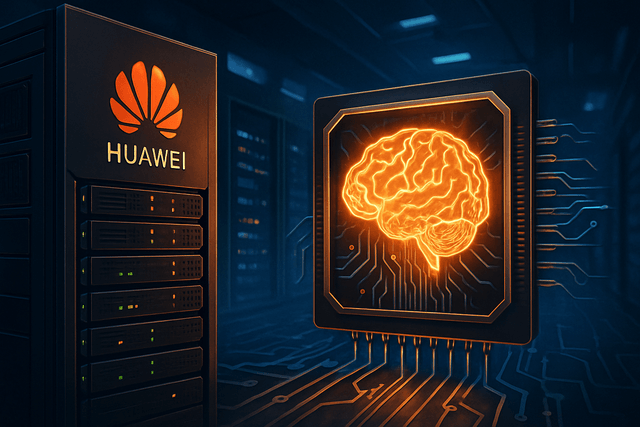Huawei Technologies made a bold statement in the global AI race by debuting its CloudMatrix 384 AI computing system at the World Artificial Intelligence Conference (WAIC) in Shanghai on July 26. The Chinese tech giant's latest offering represents a direct challenge to US chipmaker Nvidia's dominance in the AI hardware market.
The CloudMatrix 384, officially named Atlas 900 A3 SuperPoD, is a massive integrated system built around 384 of Huawei's Ascend 910C processors arranged in an all-to-all topology. The system can deliver up to 300 petaflops of BF16 computing power, which is approximately double that of Nvidia's GB200 NVL72 system. It also boasts 3.6 times more memory capacity and 2.1 times more bandwidth than its American rival.
Spanning 16 racks, including 12 compute racks housing 32 accelerators each and four networking racks, the CloudMatrix relies entirely on optical links for all internal communications. It incorporates 6,912 800G LPO optical transceivers, enabling extremely high aggregate communication bandwidth while maintaining fault-tolerant capabilities and scalability.
This achievement is particularly significant given the context of escalating US-China tech tensions. The system's unveiling at WAIC 2025 marks a critical step in China's push for technological self-sufficiency, representing a direct challenge to Nvidia's long-standing dominance in the region and signaling a new phase in the global chip war.
However, Huawei's approach comes with trade-offs. While the CloudMatrix 384 outperforms Nvidia's offerings in raw computing power, it does so at the cost of efficiency, consuming approximately four times the power of Nvidia's GB200 NVL72—559 kW compared to 145 kW—making it roughly 2.3 times less efficient. Technically, the system is by no means efficient or modular in the Western sense, but its raw performance is certainly competitive, provided that power consumption and acquisition costs are of secondary importance. The goal is clear: in a market where US sanctions make access to Nvidia GPUs difficult or impossible, Huawei is securing China's national computing base for AI applications.
The launch demonstrates how China's semiconductor and AI sectors continue to show strong growth despite US export controls. Huawei's 2025 targets mark a pivotal step in China's AI chip self-sufficiency. With commercially viable production yields and significant planned output, the Ascend 910C is no longer a niche product but a credible alternative to Nvidia. While performance gaps persist, geopolitical forces are accelerating adoption, reducing Nvidia's dominance and reshaping global AI infrastructure.
As the global AI race intensifies, Huawei's CloudMatrix 384 represents not just a technological achievement but a symbol of China's determination to control its AI destiny in an increasingly fragmented tech landscape.

